
Uncomfortable Proximity:
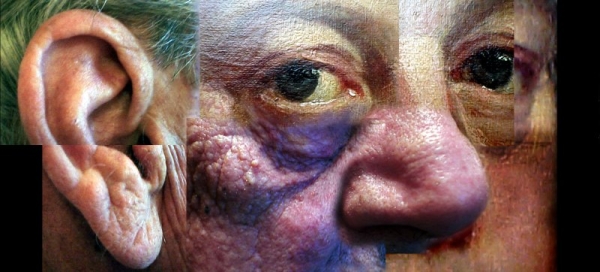
Hogath, My Dad 1700-2000
When asked to create a web site by Matthew Gansallo of the Tate I found myself awkwardly situated by my admiration for parts of the collection and my equal disdain for the social values that framed the creation of much of its Art and of the collection itself. I felt nervous of having to produce an on-line work in a month from scratch and how to deal in amongst the bric-a-brac of the colonial masters in the UK. It's easy to wave a bit of shit on a stick, carry up the stairs until someone sniffs it. But there is little or no point to this strategy other then self gain and notoriety which are of little interest. I hoped the Tate would embrace this work as a legitimate counter point to some of it's own agendas and maintain the momentum for the glasnost of the Collection.
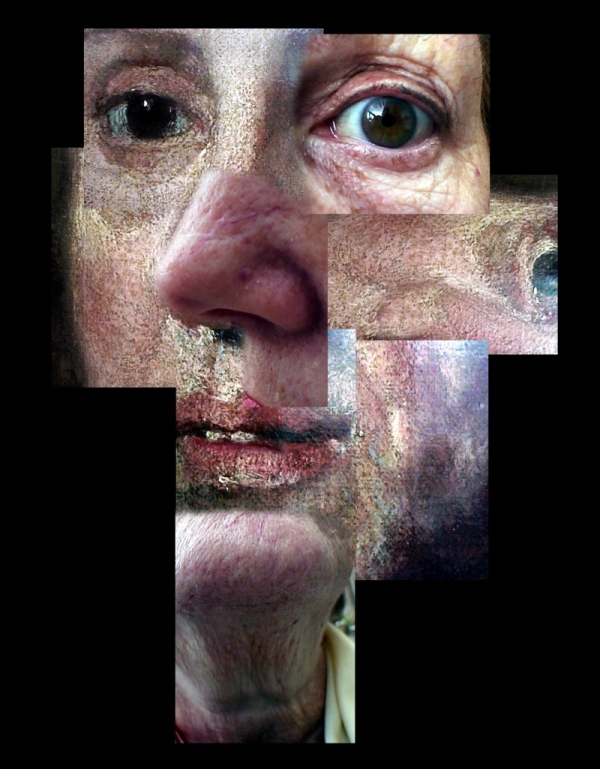
Hogarth, My Mum 1700-2000
In the UK, art's central positioning on ideas of social rank, race, and national identity was for a long time overlooked. While many artists have been active in this field, the work produced rarely positions itself against the aesthetic and administrative modus operandi that houses it. One consequence is that a self-image emerges in an art public for whom it is usual to assume that those attending "intellectual pursuits" and "culturally prestigious events" etc are above the mundanity of social conflict and who indeed positively cultivate the view of themselves as social liberals. Giving a few naughty artists the odd bit of gallery-space or web space can then be used as a pretext for the careful shunting of these problems outside of the "purified" high-cultural sphere. The creators of social conflict are thereafter located only in the vast majority of peoples not in attendance during events of cultural prestige. Exclusion from this elevated world can thus be written off as self-inflicted. It is "common sense" then that the other cultures are racist get togethers of uninspired ignorance that create the social conflict and that, in a culturally prestigious location, works of art directly about social rank, race, or national identity would be unnecessarily preaching to the converted.
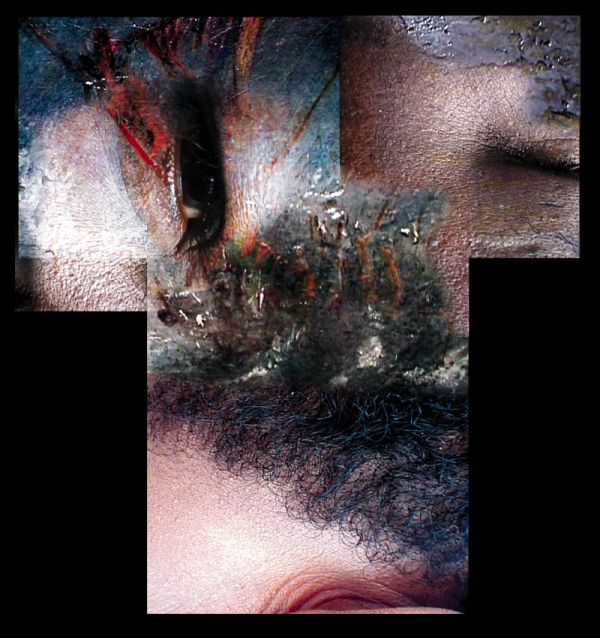
This work forced me into an uncomfortable proximity with the economic and social elite's use of aesthetics in their ascendancy to power and what this means in my own work on the internet. I was delighted of course in the creative power and imagination of the artists in the collection, enjoying the information contained in the works, whether that be the aesthetic formalism, mathematical structures of perception, raw emotion, opto-chemical reactions of light across time or the social history they contain. But when I stepped out of the temple and smelt the filth of the Thames, over-shadowed by the Tate I was reminded that, down their - in the silt - under the stones - under the floor lay the true costs of such a delight. The tragedy of any social elite's possession of public creativity and imagination has led me to try and trace at least two threads of this elite's ascendancy in present history. The first involves mapping the rituals of tastefulness, the distance it creates from the uninspired Victorian mob, the language and manners of the tasteful, and the inherent hypocrisy that this implies. The second centres on the histories of different peoples, my friends and family, either ascendant, static or uncounted which recognise themselves in terms of that tastefulness, or in reaction to it, and act accordingly.
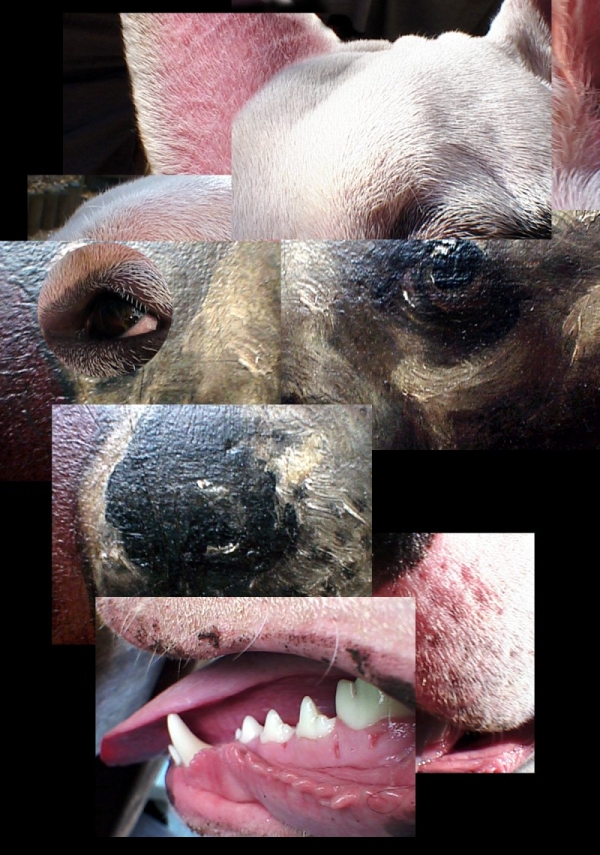
My dog and Hogarth
Emerging social elites seem to find it necessary to justify their "natural" right to wealth and privilege. This is done in many ways. The one that interests us here is the use of aesthetics to negotiate the social positions of new economic forces. Tate himself directly convinced Harcourt, the Chancellor of the Exchequer, to help out with funds to build the Tate in order to circumvent the established aesthetic orthodoxy of the time. From its beginning, the Tate has supported the taste values of whichever social elite was contemporarily emerging.
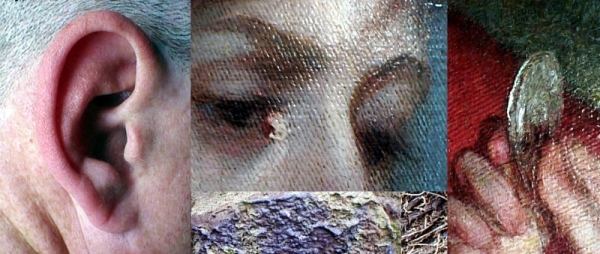
To explore the economic and social elite's use of aesthetics in their ascendancy to power we need to trace at least two threads of present history. The first involves mapping the rituals of tastefulness, the distance it creates from the uninspired mob, the language and manners of the tasteful, and the inherent hypocrisy that this implies. The second centres on the histories of peoples, either ascendant, static or uncounted which recognise themselves in terms of that tastefulness, or in reaction to it, and act accordingly.
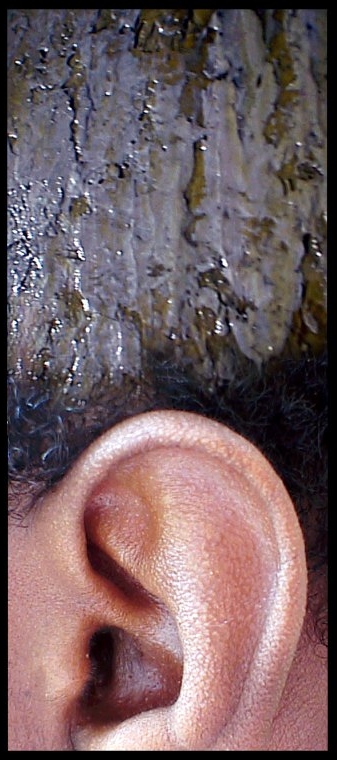
Mervin and Slavers throwing overboard the Dead and Dying-Typhon coming on. After Turner 1840-2000
Uncomfortable Proximity:
The Tate's scrapbook of British pictorial history has many missing pages, either torn out through revision or self-censored before the first sketch. Those that did make it created the cultural cosmetics of peoples profiting from slavery, migrant labour, colonisation and transportation. Clearly the images in the historic collection and the image of the Tate itself are pregnant with the past's cosmetic cultural surgery made ready for the shopping lists of the future. The skin of these paintings was stretched over a psychological frame, a shield against which were thrown the filthy, diseased, rotting corpses of daily life, profit and excess. The scrapbook's scalpelled pages will never be found but they articulate in their absence the political and economic relations of that society and of ours. While Tate can never be fully inclusive of peoples' histories that may have run counter to its own, it can at least be a site of critical participation in the present history of cultural cosmetics of these islands.
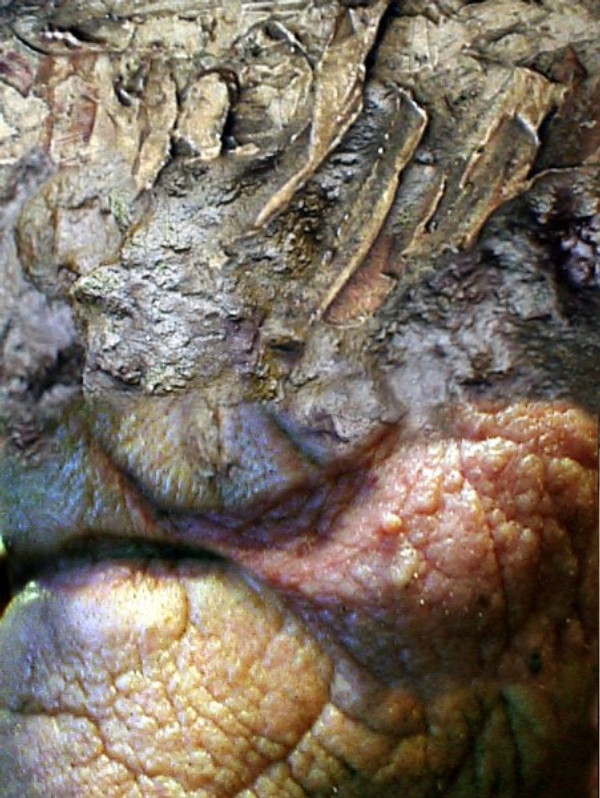
Constable Hayway, Dad, Mud from the Thames 1800-2000
From adolescence I had visited the Tate, read the Art books and generally pulled a forelock in the direction of the cult of genius, on cue relegating my own creativity to the Victorian image of the rabid dog. We know well enough that this was how it was supposed to be. The historical literature on 'rational recreations' states that, in reforming opinion, museums were envisaged as a means of exposing the working classes to the improving mental influence of middle class culture. I was being innoculated for the cultural health of the nation.
I have tried in the images accompanying this text to play with the broken links within the Tate's collection, grafting on the skins of people who are close to me, dragging parts of the collection through the mud of the Thames, and infecting some of it with a relevant disease.
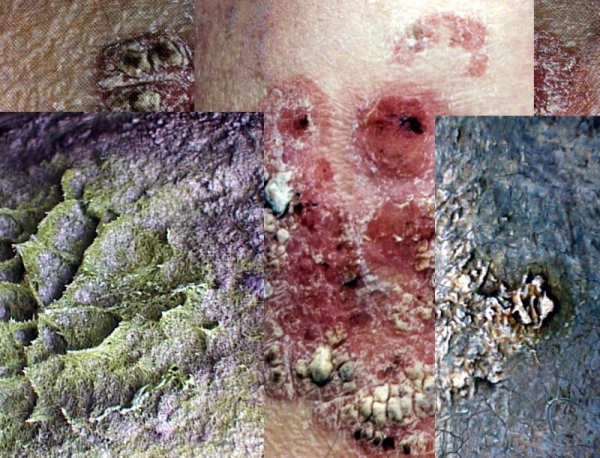
Turner, Mud/Slime from the Thames and Scabs 1840-2000
Tate Britain stands on the site of Millbank penitentiary incorporating part of the prison within it's own structure. The bodies of many of the inmates remain concreted into the foundations of the building. The drains that run from the building to the Thames, a stones through away, bleed this decay into the silt of the Thames.
By 1776 transportation to the New World had been interrupted by the American War of Independence and old sailing ships known as hulks were dragged up the Thames and stuffed with up to 70,000 prisoners. This though was to be an 'expedient' that lasted till 1859. In 1779 the government introduced an Act which created a new form of hard labour for prisoners in the hulks. It commenced with dredging the river Thames - a profitable precursor to expanding trade with the colonies - and made provision for building Millbank penitentiary amongst others.
The penitentiary was the largest in Europe. It became the 19th Century cesspit for containing the rowdiest of the political mob. Henry James, who visited the prison in 1884, made use of his visit. In the novel 'The Princess Casamassina' (1886) he has Miss Pynsent describe the "brown, bare, windowless walls, ugly, truncated pinnacles and a character unspeakably sad and stern. It looked very sinister and wicked, to Miss Pynsent's eyes, and she wondered why a prison should have such an evil air if it was erected in the interest of justice and order... it threw a blight on the face of the day, making the river seem foul and poisonous." As with today, there was considerable delay in government building programmes.
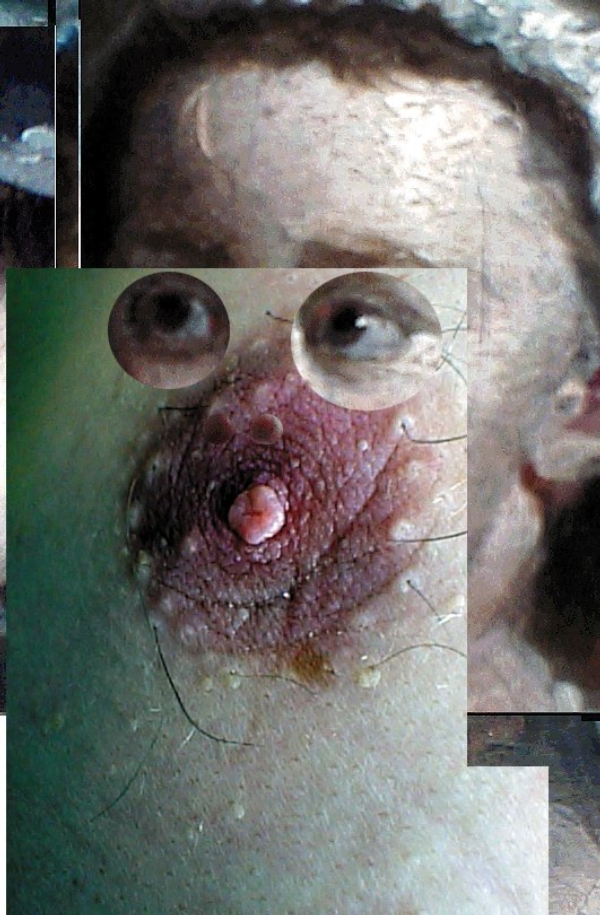
My Nipple and The Du Cane Boehm Family Group 1734-2000
Transportation to Australia, made possible in 1787, began to relieve the pressure on the stinking hulks. It was not until 1817 that Millbank penitentiary finally opened. A convict at this time was stripped, shaven and sentenced to penal servitude, not imprisonment, and spent the first nine months of their sentence in solitary confinement. Before the birth of the prisons, punishment was an open display of power: public executions, floggings, disembowelling etc. The worry of the time was that such overt displays had become a source of contention to the mob and public order was threatened in various ways. Parliament, therefore, detached punishment from the public gaze and into prisons. Middle class society increasingly condemned the poor as products of their own low and immoral natures and, in 1834, the Poor Law was introduced, in which Disraeli announced to the world "that in England poverty is a crime". Other comments of the time condemned the poor as a vast heap of social refuse, the "mere human street-sweepings" who "serve as manure to the future crime-crop of the country". The main view of the ascendant middle class was that the poor existed beyond the farthest reaches of civilized, art-loving society and were an indolent, ignorant, degraded, criminalised sub-race. These views were structured into science by, amongst others, Beddoe, a future president of the Anthropological Institute.
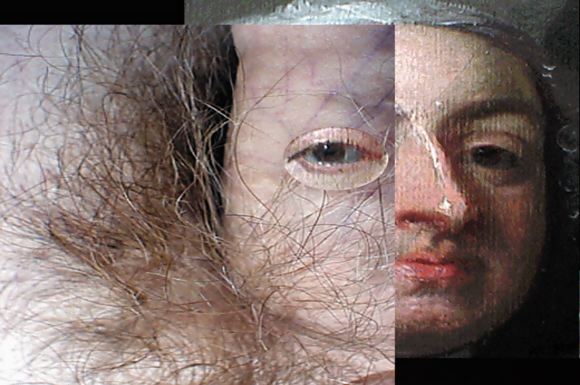
My Skin and The Du Cane Boehm Family Group 1734-2000
A racial or quasi-racial view of the poor was not the only one. Liberals, believing in the 'levelling-up' theory (that the labourer would emulate the artisan) dwelt upon the possibility of teaching even the lowest the virtues and satisfactions of self-help. The liberal elite of the mid and late 19th century put their faith in the new persuasive power of the museums amongst other things such as schools and public parks. The birth of museums became a complement to prisons. The museum then, as now, provided a mechanism for the transformation of the crowd into an ordered and, ideally, self-regulating public. The democratic education of the mob was an attempt to addict them to the aspirational tastefulness of Victorian society. For the new social elite, sharing what had previously been private, exposing what had been concealed, became a totem of progressiveness.
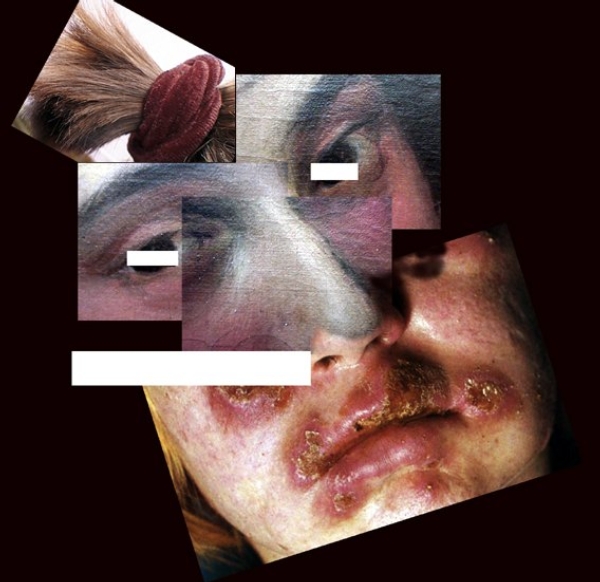
Giovanna Baccelli, Genine and Sypilis 1782 -2000 After Thomas Gainsborough
The Tate, with a more or less free admission policy, surgically removed the decadence and tyranny before offering the morsels of taste generated under previous forms of social control. The museum provides a solution to the social chaos of the street: a site where bodies, constantly under surveillance, could be rendered docile through exposure to Gainsborough, Turner and Hogarth, instead of the jailer's whip and bludgeon. If the prison changed you through discipline and punishment, then the museum was a way to show and tell so that you might look and learn. Here, the purpose was not to know about people's culture but to address people as the subjects of that culture; not to make the population visible to power but to render power visible to the people and, at the same time, to represent to them that power as if it were their own. The museum became, and is still, a technical solution to the problem of displaying wealth and power without the attendant risks of social disorder.
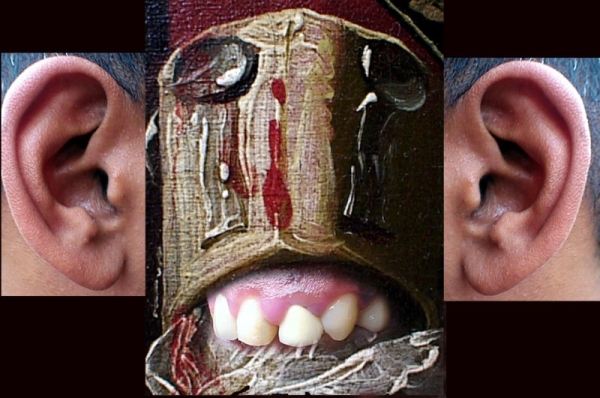
 bnr#80 =>
bnr#80 =>